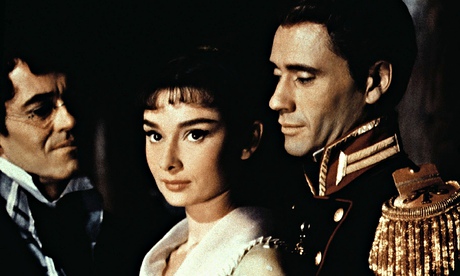War and Peace began as a domestic chronicle, but widened and deepened into an ambitious attempt to write the history of Russia during the Napoleonic campaign. James Wood revisits Tolstoy's masterpiece

Henry Fonda, Audrey Hepburn and Mel Ferrer in War and Peace (1956). Photograph: Allstar/Cinetext/Paramount
Henry James once said that "really, universally, human relations stop nowhere," and that the exquisite problem of the writer is to draw the circle "within which they shall happily appear to do so". James would never have nominated War and Peace – he famously thought it a "loose baggy monster" – but Tolstoy's novel is surely the greatest attempt in the history of the genre to represent and embody the branching infinity of human relations of which James spoke. And there is no better example of that challenge than the way in which Tolstoy's project kept growing. He wrote War and Peace between 1863 and 1868, and intended, at first, to write a domestic chronicle in the manner of Trollope (whom Tolstoy, with a few qualifications, admired).
The novel would be set in 1856, and concern an aristocratic revolutionary and his return from exile in Siberia. It would be called, improbably, All's Well That Ends Well. But in order to explain the atmosphere of Russia just after the Crimean war, Tolstoy felt he had to go back to 1825, when the Decembrists, a group of largely upper-class rebels, were arrested, and either executed or exiled. And 1825, he later said, could not be described without going back to the momentous year of 1812, when Napoleon invaded Russia and occupied Moscow for a month. Yet 1812 obviously needed 1805 as a proper prelude – which is where War and Peace begins.
More
The novel would be set in 1856, and concern an aristocratic revolutionary and his return from exile in Siberia. It would be called, improbably, All's Well That Ends Well. But in order to explain the atmosphere of Russia just after the Crimean war, Tolstoy felt he had to go back to 1825, when the Decembrists, a group of largely upper-class rebels, were arrested, and either executed or exiled. And 1825, he later said, could not be described without going back to the momentous year of 1812, when Napoleon invaded Russia and occupied Moscow for a month. Yet 1812 obviously needed 1805 as a proper prelude – which is where War and Peace begins.
More
No comments:
Post a Comment